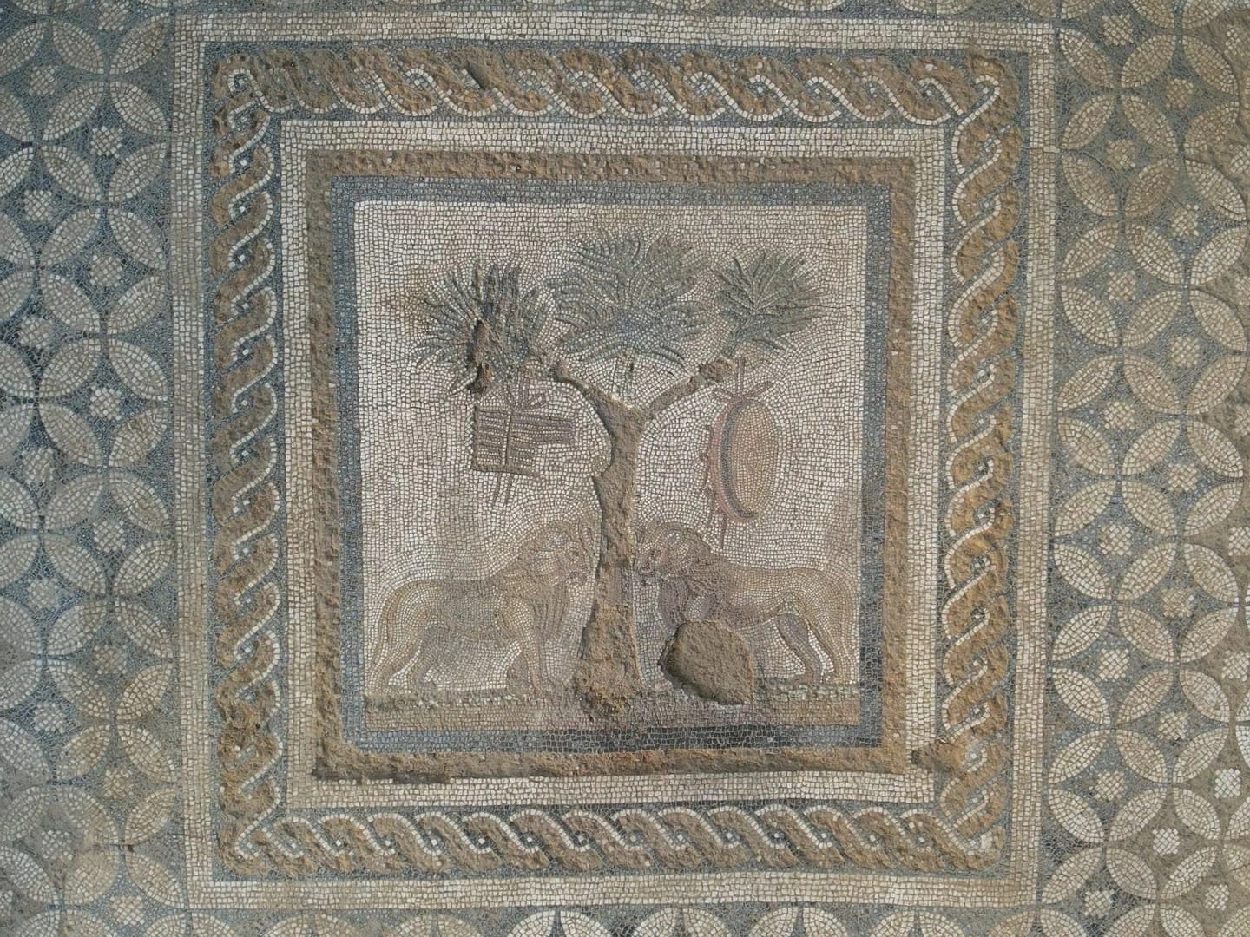Archaeologists have uncovered a mosaic depicting lions during excavations at ancient Prusias ad Hypium, located in modern-day Konuralp, Turkey.
Prusias ad Hypium was a city in ancient Bithynia which was annexed by the Roman Republic in 74 BC. The city flourished as a significant trading hub, maintaining autonomy in its local governance and even issuing its own currency.
The city was rediscovered during the 19th century, with recent excavations being conducted by the archaeology department of Düzce University under the patronage of the Konuralp Museum, and supported by the Municipality of Düzce.
Excavations indicate that the city exhibits characteristics of a Hellenistic polis. Among the surviving remains are remnants of the city walls, a gate within the fortifications, an open-air theatre, an aqueduct, and a Roman bridge.
A recent archaeological study has focused on the theatre, known locally as the “The Forty Stairs”. The theatre was built during the Hellenistic period (300–30 BC) and was expanded in the Roman period.
The study has uncovered the remains of a mosaic depicting a pair of lions, which was found in a room of the portico in the middle of the theatre axis.
The room has a rectangular shape and is adorned with a mosaic covering the entire floor with a geometric floral pattern. At the centre is a mosaic frame depicting the pair of lions either side of a pine tree. Hanging from the tree is a tympanum (a drum or tambourine), and on the left branch is a pan flute.
According to the researchers, the room was dedicated to the cult of Dionysus. During Dionysian processions, it was common to observe Silenus and maenads participating by playing musical instruments such as the tympanum and pan flute.
Header Image Credit : Konuralp Museum





